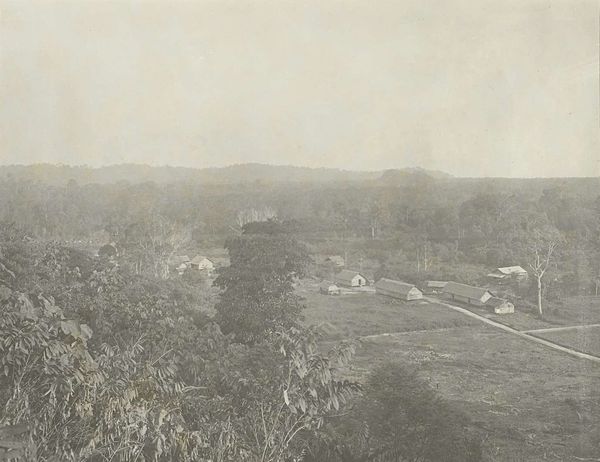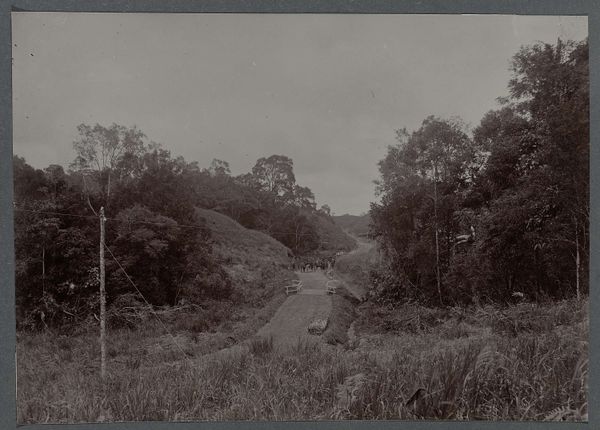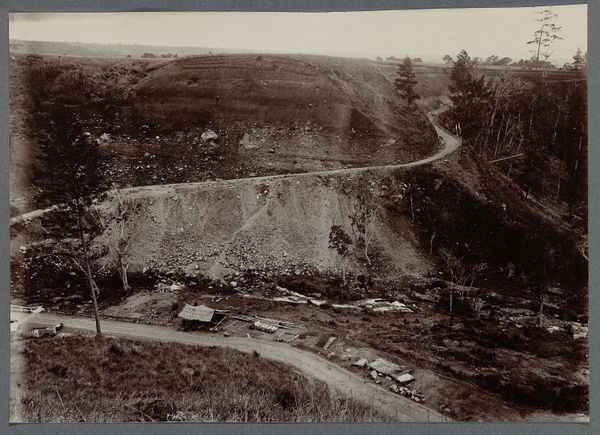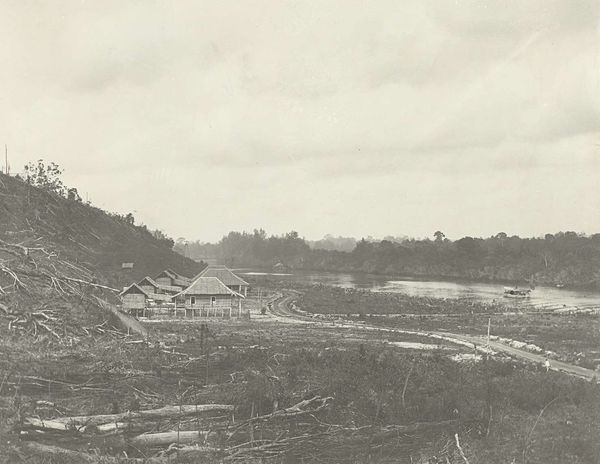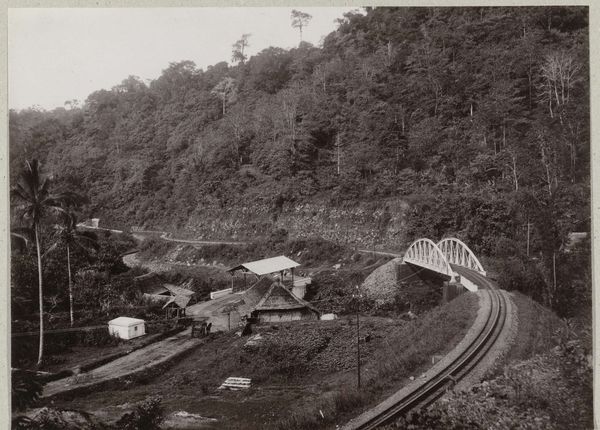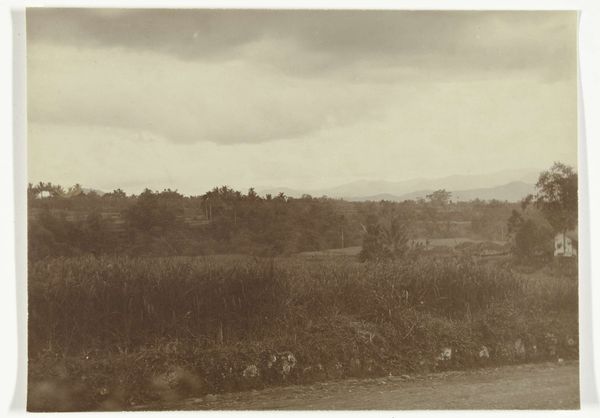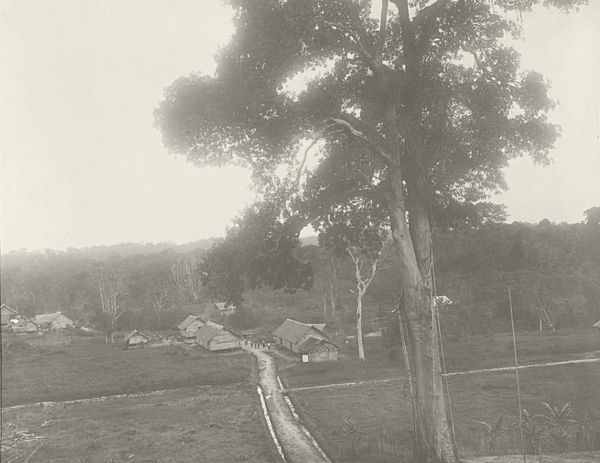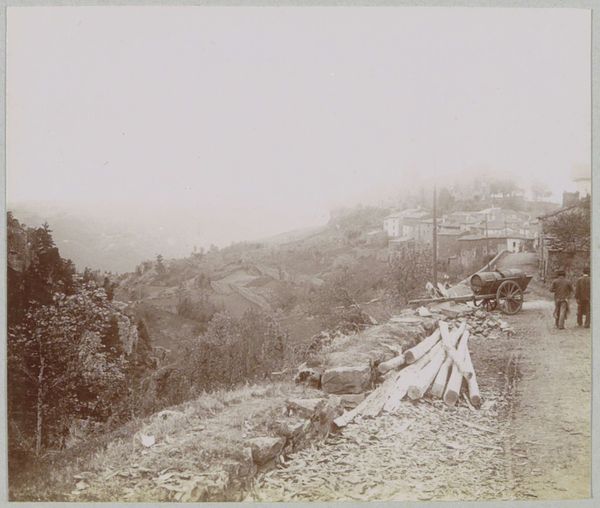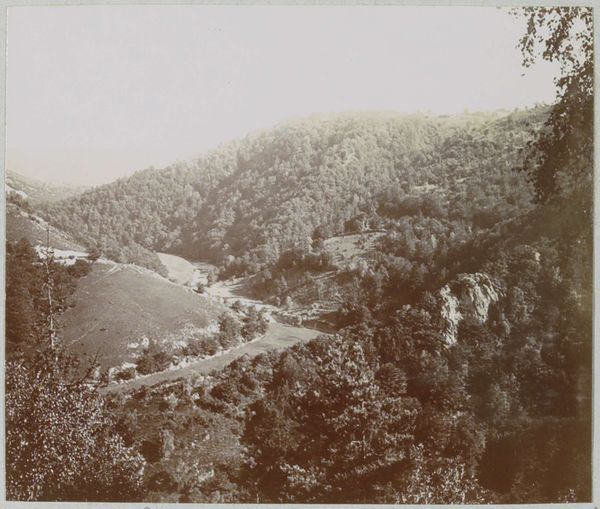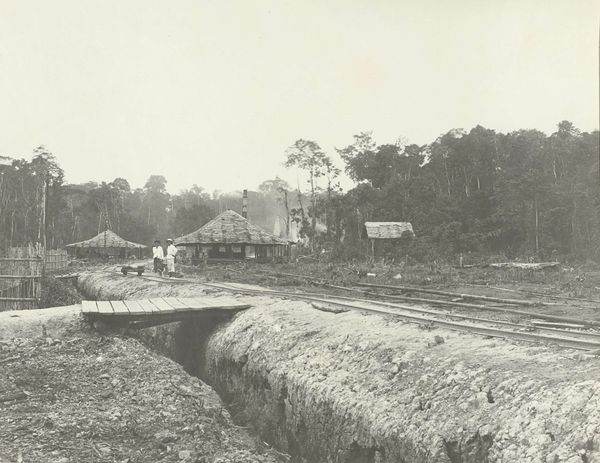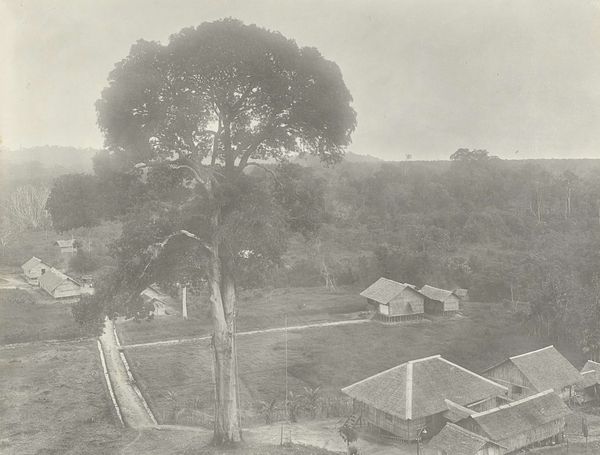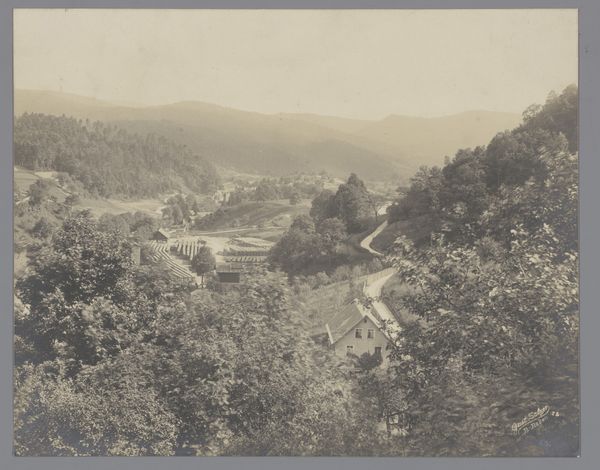
photography
#
landscape
#
photography
#
monochrome photography
#
cityscape
#
realism
#
monochrome
Dimensions: height 215 mm, width 280 mm, height 385 mm, width 440 mm
Copyright: Rijks Museum: Open Domain
Editor: Here we have "Dorp met olietanks," or "Village with Oil Tanks," a photograph created sometime between 1903 and 1907. The artist is anonymous, and it's a striking monochrome image. What immediately grabs me is the contrast between what seems like a burgeoning town and a landscape that's either been cleared or perhaps damaged. What do you see in this piece? Curator: What strikes me is how this photograph positions itself within the historical context of resource extraction. Consider the relationship between colonialism and early industrialisation; this image seems to visually embody that connection. The oil tanks suggest industry and progress, but the landscape shows evidence of human alteration and impact. Editor: So you see this photograph as making a statement about early industrialization’s impact? The destruction is very evident on one side. Curator: Precisely. Think about how photography itself was developing during this period. It served not just as documentation, but also as a tool for shaping perceptions of progress and civilization. This image asks us to consider whose progress is being prioritised, and at what cost? The photographer chooses to frame a town dominated by evidence of environmental damage, but simultaneously of potential prosperity through new industry. It invites questioning whether what is happening is helpful or detrimental. What public debate do you think may be reflected in the image? Editor: I never considered that. I was just seeing the divide between what felt like human progress and damage to the landscape, without considering what those impacts were beyond the immediate surroundings. The fact it's an anonymous photograph makes you wonder whether a statement was consciously being made by an individual. Thank you, that gives me a completely different view of what’s being presented. Curator: And that reflection is precisely what makes art and history so powerful in dialogue with one another!
Comments
No comments
Be the first to comment and join the conversation on the ultimate creative platform.
